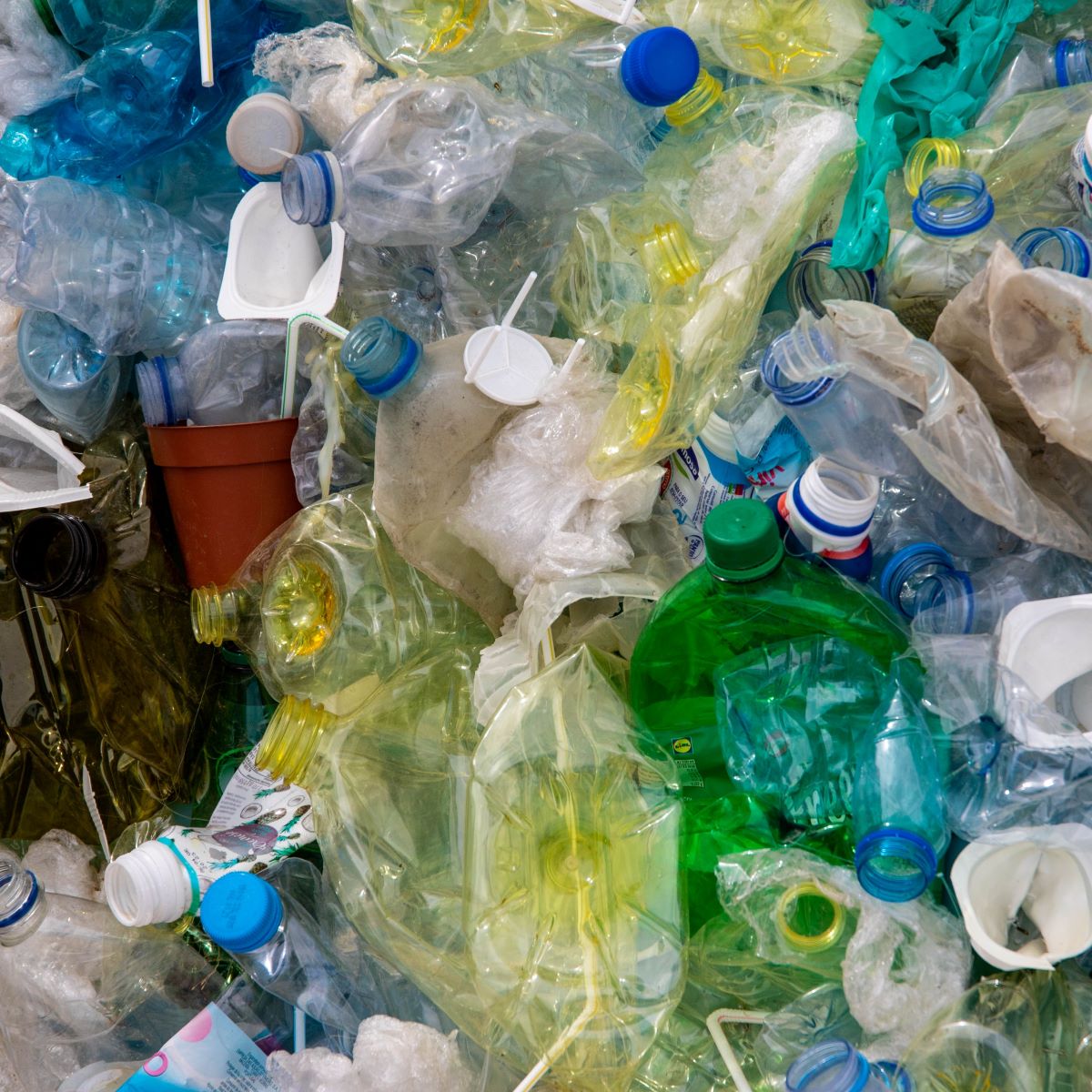by Chris Richards.
What happened when a Southampton family of four tried to go cold turkey on buying plastic for a fortnight? Chris Richards reports.
Plastics! Everyone has an opinion about them and no single solution is going to work universally. The issues surrounding plastics, as are reported widely, are their major contribution to the biggest environmental catastrophe hurtling towards us all (every occupant of the planet) since… some nebulous time in the distant past. The phrase Extinction Level Event has been bandied about; there have been many species to go extinct in our lifetimes, the issue this time is that we, the humans, are in mortal danger. Now, I suspect a certain percentage of readers will feel their attention waning; I agree, it’s all pretty bleak but please keep reading, it lightens up from here!
About three months ago, I took up the assignment of a 14-day plastic free challenge. The brief was – go 14 days plastic free and don’t prep. My immediate intention was to write a diary, maybe talk to a few people then send it off to my editor and be done with it. I’d pat myself on the back and move on with my life. So, I began by setting some rules for my household to follow for the fortnight.
The rules
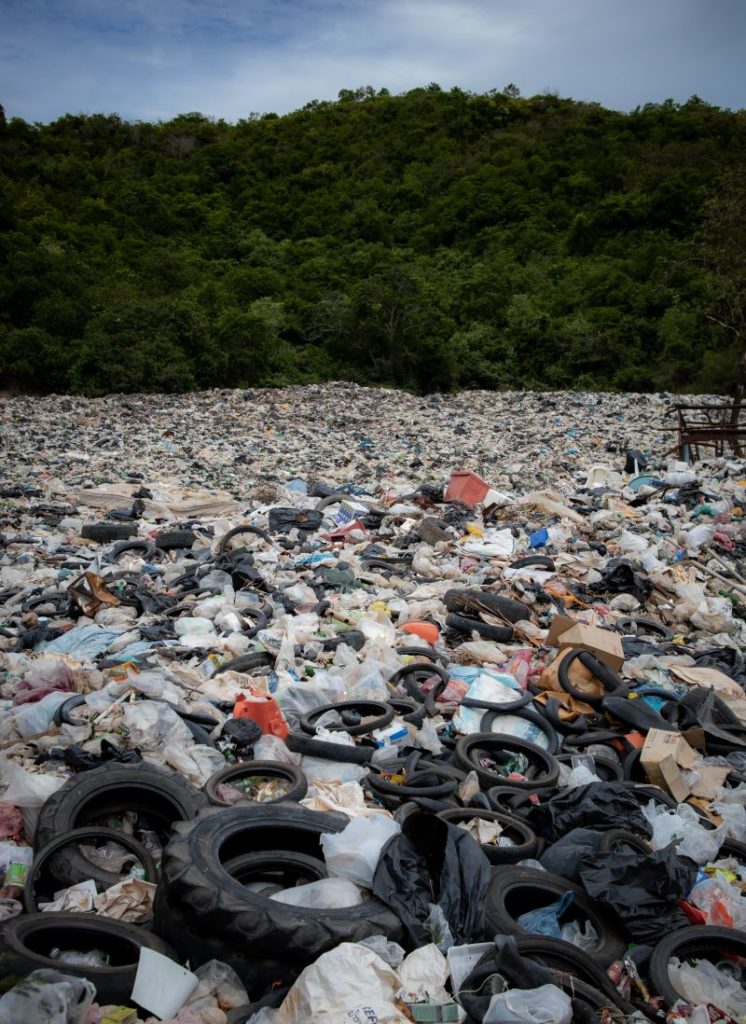
Rule 1. No single use plastic.
Simple, clear and meets the premise. Then I opened my cupboards; pasta, biscuits, rice… Right.
New Rule 1. Do not buy anymore single use plastic.
OK, so I’d use what I had then move forward making better choices. Yes, that’d work. I went to my usual supermarket. Ah…
New New Rule 1. Do not buy any non-recyclable, single use plastic… Not so simple and probably too many caveats. I needed help.
John Pellegrini is a chef at Offbeet New Forest, a vegan restaurant at Sunnyfields Farm in Totton, and author of a recipe book due out this year on zero-waste vegan organic family meals. He strives to live a zero-waste lifestyle with his family. I asked him whether he managed to achieve zero waste.
“I don’t,” he said. “Nobody does really… buying in bulk helps me here, one 25kg bag of rice four times a year from China, is far better than 2.5kg, ten times more frequently, especially again considering the bigger bags are often heavy-duty brown paper vs. plastic.”
Phew! I asked what he wished he’d known back when he made his initial changes towards zero-waste?
“I would have avoided new purchases of so called zero-waste solutions. Giving away perfectly functional plastic containers, just to purchase glass/wood/metal ones was a mistake.”
Armed with newfound confidence, exciting new options were out there to be found but I agreed, wasting what we already had would be a mistake.
The Rule: No new non-recyclable purchases and aim for low impact where possible.
Going 100% plastic free might work domestically for a very short period like the 14 days but it couldn’t be sustainable without investing incredible amounts of money, time, and making our lives unrecognisable. So much technology, modern materials and life sustaining medicine relies heavily, if not exclusively on the invention and innovation with plastic polymers.
Preconceptions
Before I tried to go zero plastic/waste I assumed that it would be incredibly difficult, and I’d have to spend remarkable amounts of money and I’d be begging to ‘get back to normal’. It’s now sometime later and Christmas has happened. I’m by no means living a zero-waste lifestyle but we as a family have made significance changes to our buying habits. The Christmas bins were much less full, the gifts more personal and the food was more considered. Our wrapping was all brown paper decorated by the kids with felt tips and poster paints. We avoided disposable in favour of what we already had as much as we could. Overall, it was cheaper, there was a ton more washing up but a lot less food was wasted. Christmas still felt festive but not so bilious. In more pedestrian times, the main two rooms that have seen a difference are the kitchen and the bathroom, the main consumable hubs of the house. The way we buy, and handle food and food waste has been the most significant and day-to-day change. There were far more options for alternatives that were affordable and, a lot the time, just better than I expected.
Kitchen
Fresh fruit and vegetables were initially a massive headache. For the 14-day duration, our eating habits had to change. Choosing only the non-wrapped fruit and vegetables meant classic leafy salads were out. My friend Theresa is a conscientious shopper who has endeavoured to reduce her household’s impact for a couple of years, her experiences during her own 14-day diary singled out salad items:
“Day 1 – wanted to do salad for tea but couldn’t find lettuce not in plastic. Tried greengrocer but still in plastic. Even when we’ve had veg boxes, I think the lettuce has always been in plastic. We had cherry tomatoes in the garden, so I did a tomato salad instead.”
Once the 14-day challenge ended, and being keen on eating salad with lettuce, cucumber and other commonly wrapped fresh veg, I researched the reasons given for the packaging. They were to do with reducing food waste, another significant and contributing problem with conflicting and widespread solutions. A cucumber is supposed to last a further week if wrapped in plastic and therefore is much more likely to be eaten – in the main, it’s intended purpose and the most natural way of disposing of it. Put simply, transporting a load of fresh food about the world (even over a short distance) via train, plane and automobile, for it then to end up rotting and going unused is just a waste, pointlessly adding to the carbon emissions from logistics and agriculture. The plastic wrap reduces the supplier’s carbon ‘footprint’ and let’s face it maintains profits for everyone involved in sales. Imagine a sun kissed farmer’s face smiling with pride and providing for an undoubtedly delightful family – there that’s better.
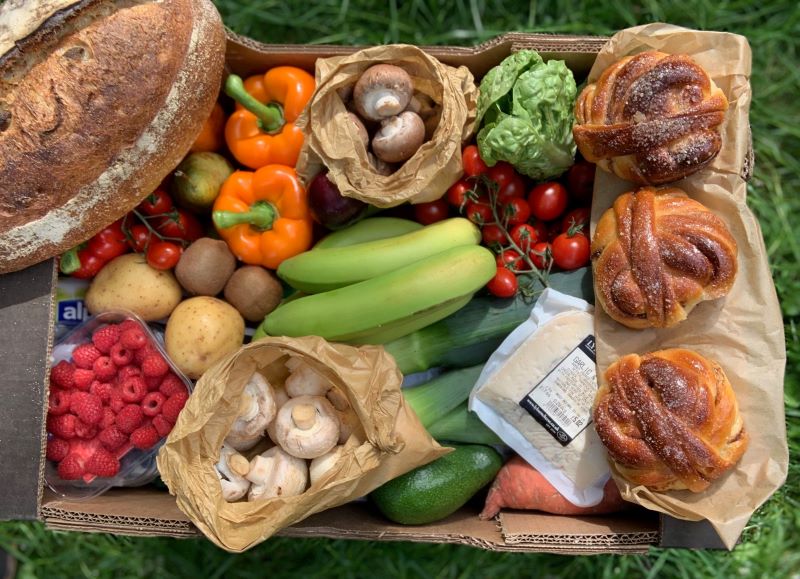
In a bid to making more local choices and trying to keep to the minimal waste ideology we decided to start a weekly delivery of fruit and veg from a local supplier. After a few recommendations we landed on Bitterne Box Co, they operate a refreshingly flexible, reasonably priced and excellent service. All the fruit and veg that’s available that week are listed on their Facebook page. A timely reminder message is sent, to which I reply with my order and any changes I’d like and pay via a bank transfer at the time of ordering. I have a couple of non-deadly but significant allergies to certain fruits and these have been accommodated admirably. All questions and issues I’ve raised have been promptly, politely and emphatically dealt with to my immense satisfaction. Wednesdays are busy for us as a family and it is always lovely to come home to a sturdy cardboard box of colourful fresh fruit and vegetables (sometimes milk alternatives and fresh bread too) on the doorstep. The previous week’s box is picked up at the same time, so my bins and conscience are kept clear. All my worries about whether I’ve got the right shopping bags and having to humph them up the road from the shops are gone which leaves me satisfied!
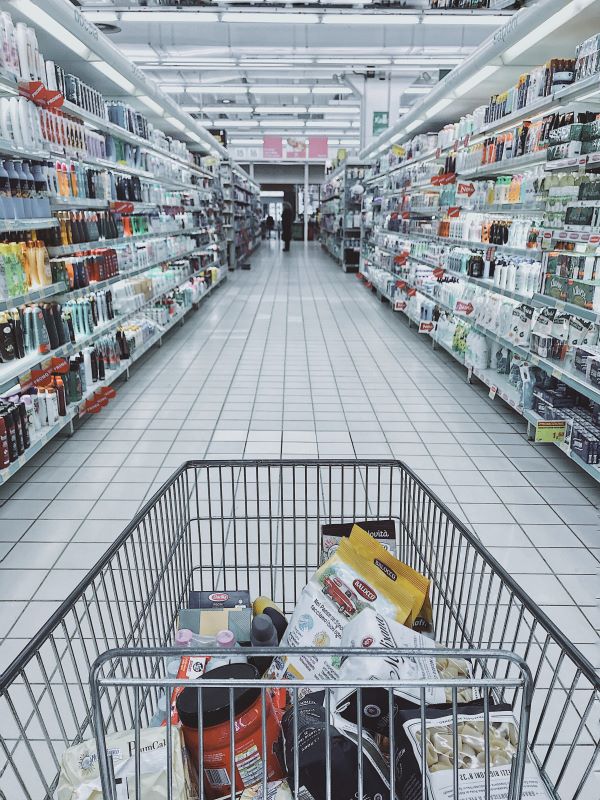
It’s not just the food in our kitchen which has been considered. Once we had worked through our normal pack of yellow and green sponges, I was free to search the internet to shop for a more sustainable and long-term alternative. I found a silicone sponge. In fact, I found hundreds of these colourful and neat little chaps! Some are flower shaped, some long, others round. All are advertised for their scrubbing and anti-bacterial qualities and heralded for their pot-holder capabilities. I got a set of 4 for less than £5 from a well-known online retailer and have been really happy with them. An extra bonus has been that the dish soap has lasted a lot longer as it all goes towards the cleaning of the more stubborn or delicate dishes that won’t go through the dishwasher and not lost in the sponge! There are make-up versions too!
I have felt the departure of the kitchen roll most of all the items I’ve swapped out. Being able to just pull a couple of squares of absorbent sheets off a roll and chuck them away felt hygienic, simple and convenient. Thankfully for our household budget, I am a hoarder. We had a large selection of Ikea, Asda and many other muslins sitting in the airing cupboard almost forgotten since my boys have grown out of their constant use. These, along with my ridiculous number of tea towels, have a new lease of life filling the gap left by kitchen roll. The transition to using fabric cloths and washing them has not been difficult but the habit of reaching for a roll or casting my eye over the counter where it used to live is still annoyingly present. Most of the changes have involved new and different objects or products which I think has helped my enthusiasm. This one is just my old things back in use, perhaps this tells you more about my compulsions than any practical information but that is my reality.
Bathroom
Moving on to the bathroom. There were so many bottles! Even on entering the bathroom on that first morning of the challenge, I was shocked at just how many plastic containers we blindly used, many in recyclable plastic but all disposable and would eventually end up in one of the two kerbside bins. Shampoo, conditioner, shower gel, foam bath hand soap and many others just for making my face feel clean and hydrated. Make up has always been minimal just because I never got into the habit of wearing it but pampering smellies have long been a favourite of mine. And let’s just say my hoarding ways do not end with tea towels!
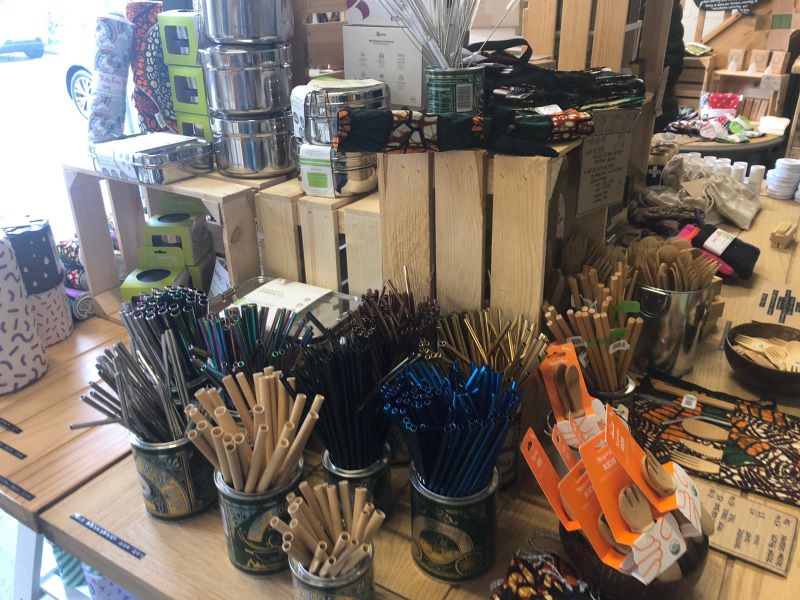
The obvious place to look for all the basics in alternative ways was Lemon & Jinja, Romsey’s first plastic free store! Shopping here is an experience. The aesthetic of the interior is worlds apart from the Industrial Estate it is nestled in. Grey sheet metal and uniformed regular plots disappear beyond the front door and become warm, caramel coloured bare wood and tidy calligraphy on chalk boards and labels. Everything looks like it’s been in situ since before plastic was even a shadow of an idea, whilst remaining modern, as if plastic just didn’t happen here. The stock is the decoration and colours become eye catching with familiar but beautiful things begging to be examined and touched. Plastic is undoubtedly amazing and can be literally anything but, for me at least, it rarely invites more than sight. Instinct takes over with wood and metal, we know these things have differences in temperature and texture we can’t necessarily experience with just our eyes.
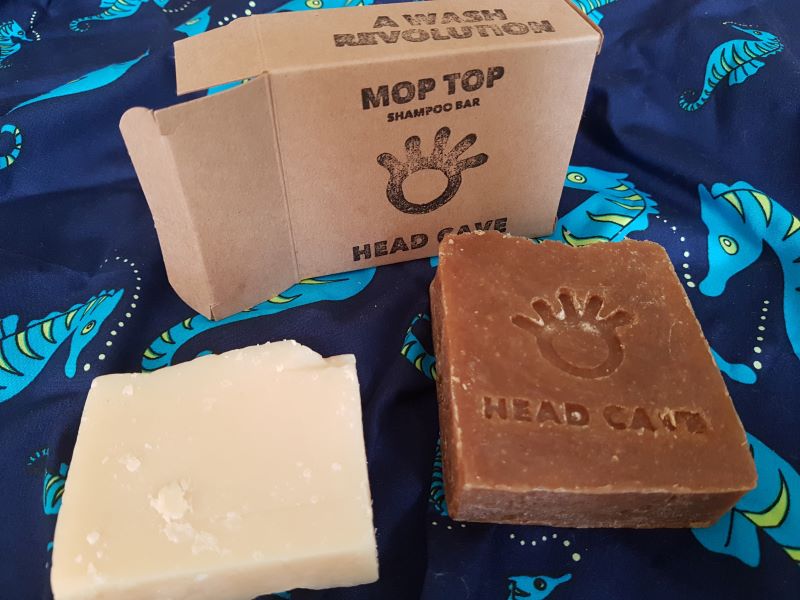
We stayed strong and only bought what we needed, the first time. Solid shampoo and shower gel in a refillable little glass bottle. The shampoo was amazing and has left my short and oil- prone hair manageable and clean, even pretty shiny! The shower gel in a glass bottle was less exciting and due to it being tiny and glass I have relegated it to the cupboard for Daddy’s beard stuff. I have decided to use all the lovely expensive block soaps I’ve ever bought and never used due to their cost or irreplaceable nature. My eldest son has mild eczema and has never reacted well to bubbles in the bath or smelly soaps and shampoo in general, so the solid shampoo has been a revelation for him. It’s mild enough to not effect his skin and efficient enough to only need a very small amount, so even at £7 a block (cheaper off cuts are available in store) it is not more expensive than buying a half decent shampoo in the shops.
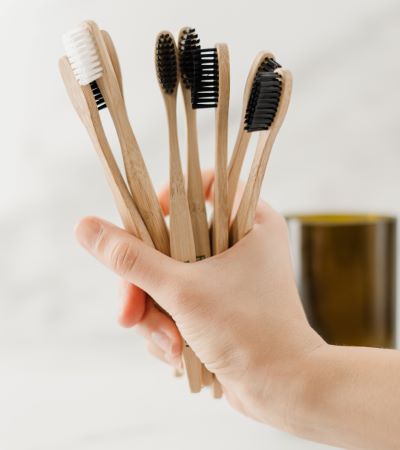
One item that I haven’t been able to reconcile with plastic free or sustainable long-term alternatives is the toothbrush. We bought bamboo brushes a couple of times but they turned out to be too soft for my husband and elder son so didn’t last well even though they were much more expensive. So we switched back. We haven’t investigated toothpaste alternatives. This is a part of our lives which we will allow others to blaze the trail for us. Something had to give and it was that. Having said that, for toilet roll we opted for 48 Who Gives a Crap rolls to be delivered every three months. The plus side is we have a ready abundance of loo roll which is all individually wrapped in colourful paper and absolutely no plastic (except for the tape on the outside of the box. Baby steps). The obvious negative is storage! They are very long rolls and made to be economical and good quality. Great! But now there’s a huge box of bog roll on my landing. I may have to design an attractive and permanent storage solution because the benefits are just too good. Charitable donations, environmental concern, a seemingly appreciated workforce and I don’t have to lug a massive load of toilet roll home from the shops! Tweet us your solutions #sotonincommonbogrollbulk Teach me to love the bog roll bulk!
Those of a squeamish nature about women’s issue should just skip this entire paragraph, see you in a bit. ***I am woman, I have periods. I live in a household of husband and two young sons, so must only concern myself with me. Options like the reusable alternatives would have been absolutely brilliant as I was growing up and particularly back in my school days. I was at an all girls’ school and the familiar sounds of plastic crinkles and Velcro like rips coming from the toilet cubicles is no longer a necessity! And probably wasn’t then but I never knew. Back to now, I have found that a silicone cup works best for me teamed with ModiBodi period and leakproof underwear. My bathroom bin is now remarkably empty! The underwear just feels like big and comfy pants and I have never felt more confident about wearing any of my clothes at any time of the month. These products and so many like them are readily available online and in the long term are much cheaper. Long term as in lifetime! The pants were about £20 each (including postage) and I had palpitations at the thought initially, but I am converted and would never go back to living without them. There all done.***
Is it all bad?
This whole experience inspires a fundamental question: is plastic use always bad? There is no denying the massive and deadly impact thrown away plastic has on our oceans and marine life. An then there’s the carbon emissions from the creation of new plastic from the outset. But surely these are problems of excess and irresponsible handling not necessarily of the product itself. An informative three-part podcast for the BBC by Mark Miodownik called ‘Plastic Fantastic’ examines not only the current impact and potential solutions but also the history of the material in its many incarnations. I was fascinated to learn for instance, that invention of this remarkable innovation helped to save many animals from extinction by presenting a viable alternative to their shell, skins and bones. As an asthmatic, I am endlessly grateful that my inhalers are made of safe, clean and durable plastic. It’s easy to dismiss plastic as the cause of a lot of the Earth’s evolving problems but now we have plastic, can we ever do without it completely? Probably not, at least it’s not a society or way of life that we could all use equally or safely. So where do we go from here?
Reduce, reuse, recycle
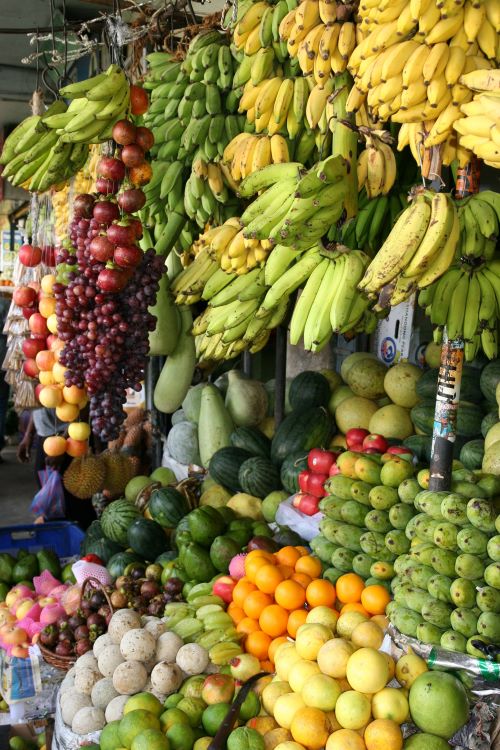
There is so much literature about recycling and the rules surrounding it. As a consumer and on a domestic level the best policy is to try and avoid buying it. Even in the last three months, my local Sainsbury’s has removed the thin single use bags for loose items and replaced them with reusable draw string nets which can be purchased for 30p each. A lot of the fruit and veg are still wrapped in plastic by suppliers so when the plastic packaging is unavoidable, it’s time to make a judgement. The plastic that stretches (LDPE) can normally be recycled at shopping bag recycling points, although not in the green bin for kerbside collection unfortunately. A good rule of thumb is if plastic stretches before it tears it’s probably a polyethylene and recyclable somewhere. Good websites to lose yourself in are recyclenow.com and bin collection local government websites (search local bin collection to find your most relevant information) which can take you down a rabbit hole of links to ideas for reducing your food waste, tips and instructions for composting, and labelling descriptions.
The only real way to make a positive change for yourself and the planet is to get informed, get interested and then do your best to not make it worse. Make the negative impact a minority.
And now?
We are much more conscious as a family of the individual changes we have made for the better. There is no way that we would be comfortable going back to how we operated, blindly and without thought, before the challenge took place. We still make less than ideal choices probably daily but we are at least making them knowingly and with a plan as to what we can do with the waste we generate to have the lowest impact. We’re just trying to make it not worse. Better is probably a tall order so we’re shooting for not worse. The only way to make these changes easier for everyone is for people to blaze a trail first. Feel free to share all your ideas with us on Twitter and on our Facebook page. I’ve only scratched the surface of what Southampton, as flawed as it might be, has to offer to help us all make it not worse. #sotonincommonnotworse Please use my incredibly long hashtag to share your experiences, I’ll look out for you all.
Top photo by Magda Ehlers.

